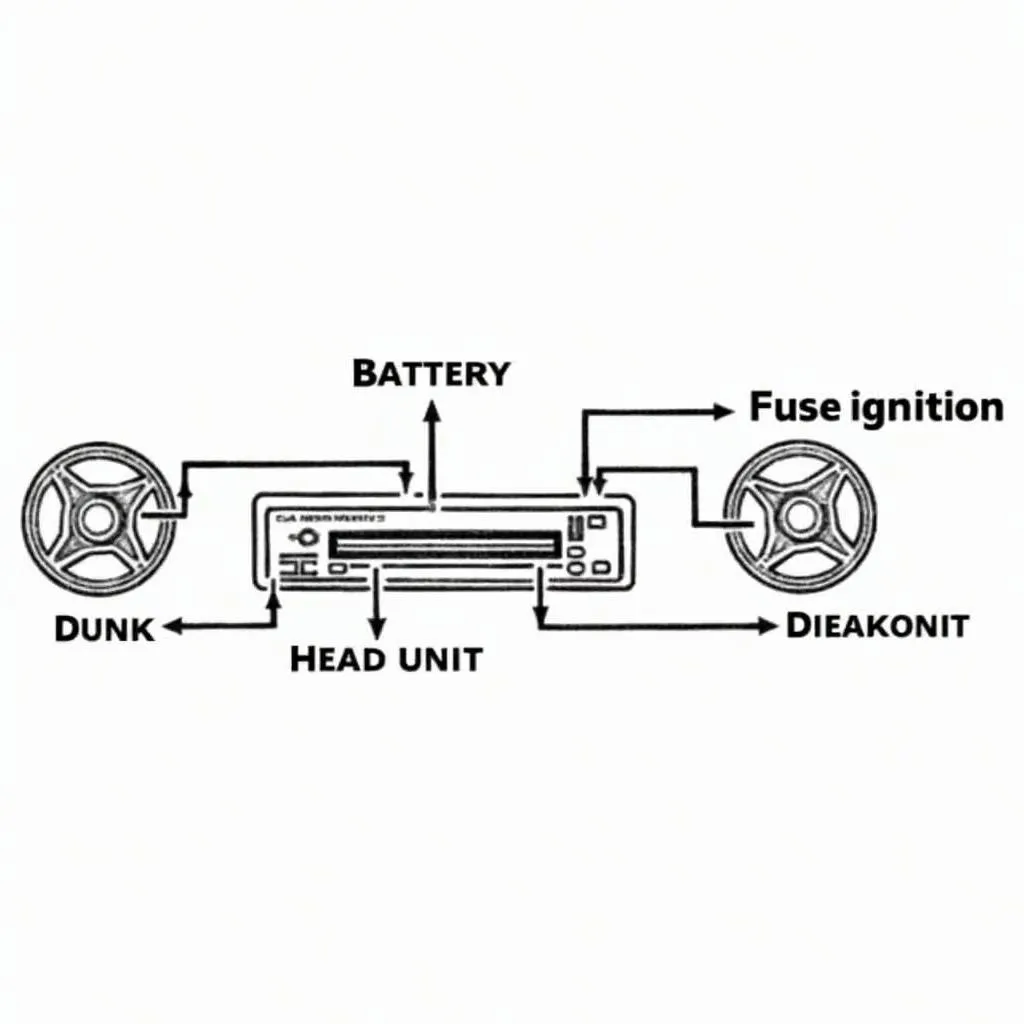The Warner air utility brake control system is a vital component in many commercial vehicles, responsible for providing reliable braking power. Understanding this system is crucial for anyone involved in maintaining or repairing these vehicles. This guide will help you troubleshoot common problems related to Warner air utility brake controls and offer solutions for resolving them.
Identifying Problems with the Warner Air Utility Brake Control
The first step in resolving any issue is accurately identifying the problem. Several symptoms can point towards a malfunctioning Warner air utility brake control system. These include:
- Loss of braking power: If you notice a decrease in braking effectiveness, it could be due to a problem with the air utility brake control system.
- Erratic braking: If the brakes feel inconsistent or apply unevenly, this may indicate a problem with the brake control system.
- Air leaks: Hearing hissing sounds from the brake system often indicates a leak, which can compromise braking pressure.
- Air pressure gauge malfunction: If the air pressure gauge reads incorrectly or doesn’t function at all, it could be a sign of a problem with the air utility brake control system.
Common Causes of Warner Air Utility Brake Control Issues
Several factors can contribute to problems with the Warner air utility brake control system. Here are some of the most common causes:
1. Air Leaks
Air leaks can be caused by worn or damaged air lines, fittings, valves, or other components in the system. These leaks can lead to a decrease in braking pressure, making the brakes less effective.
Troubleshooting Tip: Use a soapy water solution to check for air leaks in the system. If bubbles appear, this indicates a leak.
2. Valve Problems
The air utility brake control system contains several valves that regulate air flow to the brakes. These valves can become stuck or fail, causing problems with brake operation.
Troubleshooting Tip: Inspect the valves for any signs of damage, corrosion, or blockage.
3. Air Compressor Issues
The air compressor is responsible for providing compressed air to the brake system. If the air compressor fails, it can lead to a complete loss of braking power.
Troubleshooting Tip: Check the air compressor’s operation and listen for any unusual noises.
4. Electrical Problems
The air utility brake control system also relies on electrical components, such as solenoids and switches. Problems with these components can lead to malfunctions in the system.
Troubleshooting Tip: Inspect the wiring for any signs of damage, corrosion, or loose connections.
Expert Insights: “Troubleshooting Warner Air Utility Brake Controls” by John Smith, Certified Automotive Technician
“The key to effective troubleshooting is to start with the basics and work your way up. Check for air leaks first, then inspect the valves, and finally move on to the air compressor and electrical components. Don’t forget to check the air pressure gauge for accuracy. With a systematic approach, you can quickly identify the root cause of the problem.”
Diagnosing Warner Air Utility Brake Control Problems
Once you have identified the potential causes of the problem, you can use a diagnostic tool to gather more information about the system’s operation. This can help you pinpoint the exact component that is malfunctioning.
Repairing Warner Air Utility Brake Control Issues
Repairing a Warner air utility brake control system often involves replacing damaged or faulty components. This may require specialized tools and knowledge, so it’s recommended to consult with a qualified technician.
Preventive Maintenance for Warner Air Utility Brake Controls
Regular maintenance can help prevent problems with the Warner air utility brake control system. Here are some essential steps:
- Inspect the air lines and fittings for leaks: Use a soapy water solution to check for leaks.
- Check the valves for proper operation: Ensure they are not stuck or damaged.
- Inspect the air compressor: Check the operation and listen for any unusual noises.
- Inspect the electrical components: Check the wiring for damage, corrosion, or loose connections.
- Service the brake system according to the manufacturer’s recommendations: This includes replacing brake pads, rotors, and other components as needed.
FAQ
1. Can I repair a Warner air utility brake control system myself?
While it’s possible for some individuals with mechanical expertise to attempt repairs, it’s generally recommended to seek assistance from a qualified technician. Working with brake systems requires specialized tools and knowledge to ensure safe and proper repair.
2. How often should I inspect my Warner air utility brake control system?
Regular inspections should be a part of your vehicle’s routine maintenance schedule. Aim for a thorough inspection at least once every 6 months or 10,000 miles.
3. Are there any warning signs that my air utility brake control system needs attention?
Yes, pay attention to any unusual noises coming from the brake system, changes in braking performance, or issues with the air pressure gauge. These could all be indicators of potential problems.
4. What type of diagnostic tools are needed to troubleshoot a Warner air utility brake control system?
A basic set of diagnostic tools will include a pressure gauge, a leak detection solution, and a multimeter.
5. Where can I find a qualified technician to work on my Warner air utility brake control system?
To find a qualified technician, you can contact a local automotive repair shop or a specialized truck service center.
Conclusion
Understanding and maintaining the Warner air utility brake control system is essential for the safe operation of any commercial vehicle. By learning about common problems, their causes, and how to diagnose and repair them, you can help ensure your vehicle’s braking system remains reliable. Remember, if you encounter any issues with the Warner air utility brake control system, consult with a qualified technician to avoid potentially dangerous situations.

